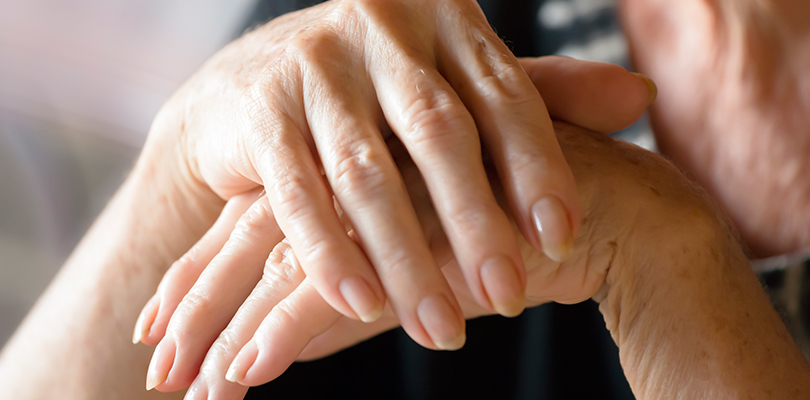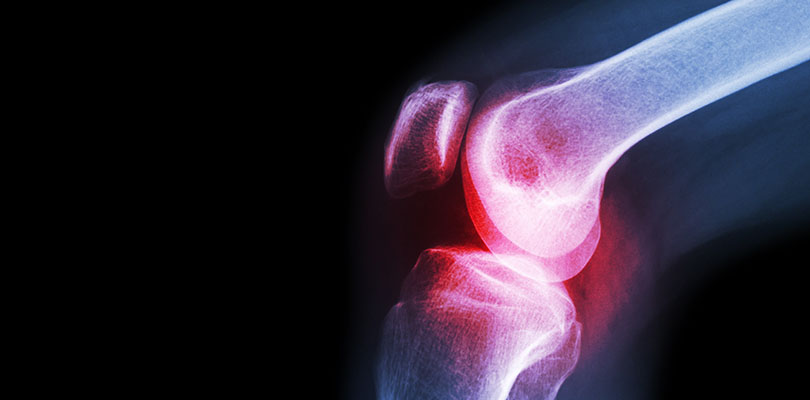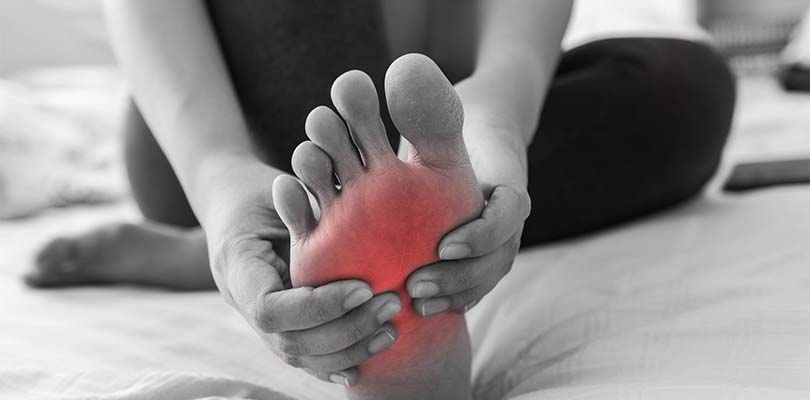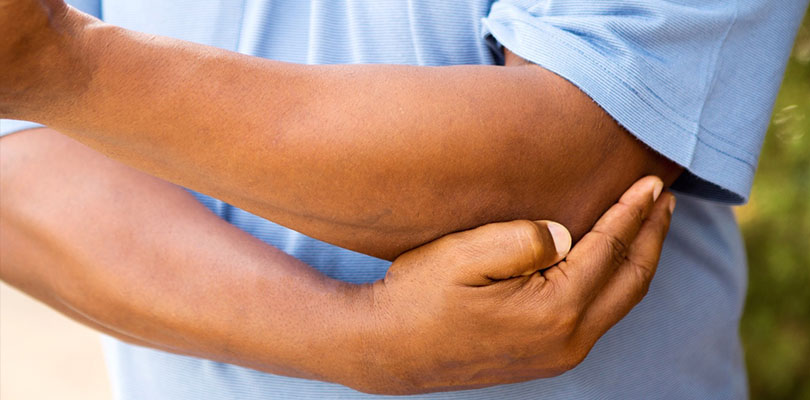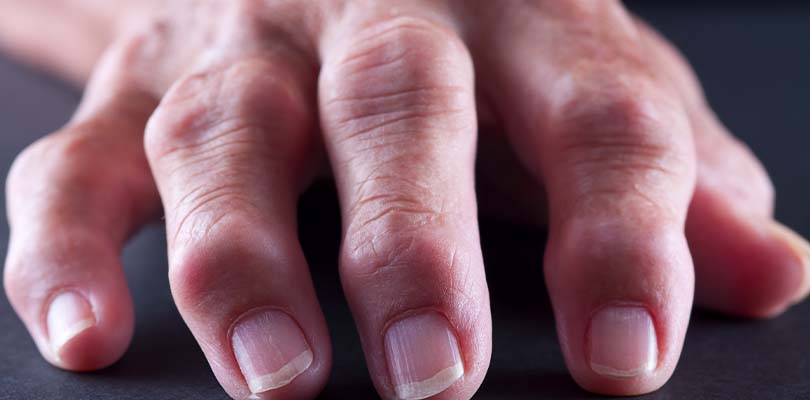Photo Credit: michaeljung / iStockphoto.com
Why Losing Excess Weight Can Ease Your Arthritis Symptoms
Arthritis, especially osteoarthritis, is a common cause of chronic disability caused by wear and tear on the joints. Excess body weight increases the risk of developing arthritis of the knees, hips, and even the hands. Thus, many people with arthritis are overweight, with a body mass index above 25.
Most people with osteoarthritis are also older. Being overweight and/or older with a debilitating condition like arthritis can make exercising and losing weight difficult.
You might be afraid that exercise will cause more damage to your joints. However, research shows that losing even 5 – 10 percent of your body weight can reduce arthritis pain and stiffness, improve the function of affected joints, and reduce disability. While losing weight can be challenging with arthritis, with diet and gentle exercise it can be achieved.
Arthritis and Weight
Excess weight is the single most important factor for developing osteoarthritis, more so than genetic factors. Also, once arthritis develops, there is a direct relationship between the degree of excess weight and arthritis severity.
Excess weight affects arthritis in two ways. First, the extra weight puts excess load directly onto the knees and hips, accelerating wear and tear.
When walking, a force of 3 – 6 times body weight is exerted through the knees. This means that every extra 10 pounds of body weight increases the force on the knees by 30 – 60 pounds. The good news is this means even a small amount of weight loss will significantly reduce the load and damage to the knees and hips.
Secondly, excess fat can release inflammatory chemicals into the blood stream. These can cause body-wide inflammation, including inflammation and further damage inside arthritic joints.
Many people end up in a negative cycle. Weight gain causes increased joint pain and decreased activity, which causes reduced joint movement leading to stiffness, instability, and muscle weakness. With a decline in joint function, there is further inactivity, which causes more weight gain and pain, continuing the cycle and progressing to disability. Weight loss helps to slow or stop this cycle.
How Losing Weight Can Help
Weight loss is the first recommendation for people with osteoarthritis. Just weight loss alone can increase joint function and reduce pain.
It is safe, has additional health benefits, and carries none of the risks of arthritis medications. Even 5 percent weight loss can reduce functional disability and pain. A 10 percent weight loss has an even greater benefit on reducing pain and disability.
Tips to Lose Weight When You Have Arthritis
Losing weight is hard and maintaining weight loss is even harder. So how do you lose weight when you already have reduced mobility due to arthritis?
If you’ve got rheumatoid arthritis, you’re probably searching for ways to deal with the pain like arthritis gloves, but do they actually help relieve pain?
Weight loss requires a combination of diet and gentle exercise. To start:
- Make a commitment. Writing down the reasons you want to lose weight.
- Take a look at where you are currently. Measure your weight, body mass index, and waist.
- Keep a food and lifestyle dairy for a week. Examine the lifestyle factors that might be affecting your eating and activity, and look at how you can overcome bad habits.
- Set realistic, specific, measurable goals. Set a long-term goal and several short-term goals at a time. Keep reassessing and readjusting the short-term goals.
- Research shows people are more successful when they enlist support. To change lifestyle factors and bad habits, consider getting support from family, co-workers, a weight loss group, a dietician, or an exercise group.
Specific Dietary Tips
Research shows most people achieve more sustained weight loss if they are under the guidance of a dietitian. While there are many weight loss diets, the overall aim is to eat fewer calories per day than you need.
Aim to reduce your diet by around 500-600 calories fewer than your daily maintenance energy requirements. Seek advice if you need.
It can help to create a food diary to identify the bad habits that lead to overeating (going back for seconds, eating when you are not hungry, always eating dessert, or eating when you are stressed). Highlight the bad habits and, for each, identify the triggers. For each trigger, think about what you can do to avoid or change the trigger.
Changing bad habits takes time. Start with small goals and be forgiving to yourself.
What About Exercise?
You might be afraid that exercise will aggravate your joints. Yes, running probably will, but gentle exercise is beneficial.
Safe exercise can not only control weight but it can also increase strength and flexibility, reduce joint pain, help maintain bone strength, increase energy and improve well-being. Exercise is also good for reducing blood pressure, cholesterol and blood sugar levels.
Always talk to your doctor before beginning exercise. The type of exercise that is safe for you will depend on your type of arthritis and the joints involved. In general, aim for 30 minutes of exercise per day. It can help to keep a training diary or even use a fitness tracker.
The general types of exercises that can be safe and beneficial are:
- Range of motion exercises. This involves moving the joints through their full range of motion to help reduce joint stiffness. Aim to repeat each movement 10 – 15 times per day.
- Strengthening exercises. This involves light weight exercises or resistance training to build stronger muscles and bones. Aim to do these exercises every other day, but rest if they aggravate the joints or if there is swelling.
- Low impact aerobic exercise, such as walking, riding or swimming. Aim to work up to 20 – 30 minutes three times per week. The time can be split into two 10-minute blocks.
- Body awareness exercises. This involves movements to help improve posture, balance, joint position and coordination. Examples include yoga and tai chi.
With any exercise, always start slow and easy, aiming for small improvements initially. It can help to apply heat to the area for 20 minutes prior. Stop is there is any swelling, redness, sharp pain, or an increase in your normal level of pain. Ice the joint afterwards. Pain that lasts for more than two hours afterwards indicates you overdid it. Start slower and gentler next time, but don’t give up.

